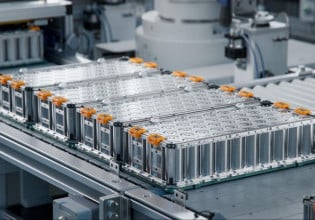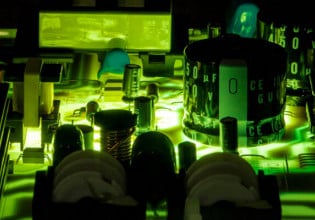Reflections on INTELEC 2014
Another INTELEC (The International Communication Energy Conference), held this year in Vancouver Canada, is over; the latest in a yearly sequence (only
Another INTELEC (The International Communication Energy Conference), held this year in Vancouver Canada, is over; the latest in a yearly sequence (only one year missing) held around the world since 1978. Conference proceedings were spread over 3 ½ days (not quite 24/7, but it seemed that way), and another day for Tutorials.
About 600 people attended, from 46 countries. An opening Keynote talk by Alex Tang set the theme as “Telecommunications and Electric Power Resilience”, and each morning a Plenary outlined aspects of the subject (Victor Goncalves on “Resilient Power Systems for the Distributed Communications Networks”, Dr. Ewart Blackmore on “Terrestrial Radiation Effects on Power Electronics”, and Bruce Carsten on his perspectives of the Past and Future of Power Electronics).
There were 24 Sessions presenting almost 100 technical papers covering Power Electronics, Communications Power Systems, Energy Storage, and environment along with 10 Commercial presentations. Two “Hot- Topic” Workshops were very popular. An Exhibitor Hall showed off equipment from 45 vendors, and the place for 20 Poster presentations. Tuesday afternoon was for relaxing on one of three local adventures or two technical tours. There were lots of complimentary eats and drinks: an opening reception Sunday evening, buffet lunches in the exhibit hall, box lunches for the tours, and a Gala Banquet on Wednesday night (with musical entertainment from an excellent local band, including a few numbers from Don Davidson, this year’s conference chair, and his wife Janet, and sons Brett and Glenn).
Much has changed since the conference began in 1978, when it was started by Engineers and Researchers of the major telephone companies and their suppliers, always an international group. Perhaps the most significant change is our impression of a “Telephone”. I suppose the classic telephone revolutionized communications in its day, but now we take that for granted - the revolution today is the Internet, and wireless. The participants in INTELEC provide its backbone. Data perhaps outshines Voice today (and Voice itself is digitized).
A lot of Media hype is focused on Data Centers, their growing magnitude and sizable energy consumption. Somewhat unnoticed is the communication system that has quietly kept up to handle everything in and out of these centers, and it now connects to each of us wherever we are - such is the stuff of INTELEC.
The theme of this year’s meeting was “Resilience”, and as I learned in the three plenary talks, it is a really important subject. Digital communication has grown to be closely intertwined with our lives if it’s not available many things stop: business, entertainment, our sense of security. Maybe it’s not like food and oxygen, but smartphones and the web are getting there.
Traditionally, one could rely on the “phone” being available through power interruptions and after many disasters. Telephone central offices had energy storage (very big batteries) and stand-by generation - an expensive UPS on our behalf, and connections to subscribers were radial from them. But today, hubs are decentralized; we rely on a multitude of cell phone “towers” dispersed to our neighborhood, each handling the increasing bandwidth needs of the locality, and transferring to high capacity fiber optic trunks. Energy back-up at so many sites is a little impractical. So “Resilience” in the Communications Energy Industry is a responsibility of increasing importance and increasing difficulty.
Every conference has its hot topics, the subject of workshops and panels of experts. At Intelec there were two: “380V DC Power Systems”, and “Remote Powering over Twisted Pair”.
High Voltage in the Telecom industry currently means about 380 to 400 Volts, eight times the traditional “48V” DC systems. With the increasing capacity of the communication system, equipment racks are spreading out. Power distribution at 48 Volts is lossy and copper-in- tensive. Increasingly, systems receive power from renewable sources, solar or wind, that are inherently at some distance from the energy storage site, so a higher voltage is attractive. Thus the industry is seeing more high-voltage installations, standards are emerging, suppliers are providing a myriad of hardware, and new issues are apparent - such as bus exposure, Arc-Flash protection, and technician retraining. So the Engineering community shares their experience at INTELEC.
“Twisted Pair” copper conductors have been the norm for service to subscribers. Fiber is now commonly used in trunks, and frequently has reached “the curb”, but cannot transmit power. Telephone grade copper is the legacy connection that could be used to provide the remote power. In the instance of Utility power outage, supplying the relatively small power needs of individual communication equipment could be done over the copper phone lines. Most phone “wires” can provide up to 100 watts at +/-180V, so this is an attractive service. But there are a host of practical considerations with implementation, so the subject is a topical one at INTELEC.
So Intelec was both informative and social. Thank you: INTELEC, and John Hawkins – President of the INTELEC executive committee, the IEEE, PELS, Donovan Davidson – Conference General Chair, Sonia and Charlotte of MCI for their excellent administration, and the host of persons who contributed to a top-flight proceedings.
At the closing, a touching ceremony welcomed Dr. Fujio Kurokawa, of Nagasaki University and an IEEE Fellow, and Keiichi Hirose of NTT Facilities as representatives of INTELEC-2015, to be in Osaka, Japan. We can look forward to it.
This article originally appeared in the Bodo’s Power Systems magazine.






